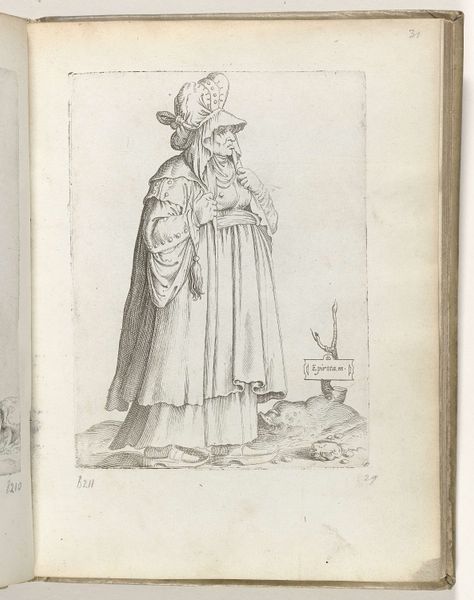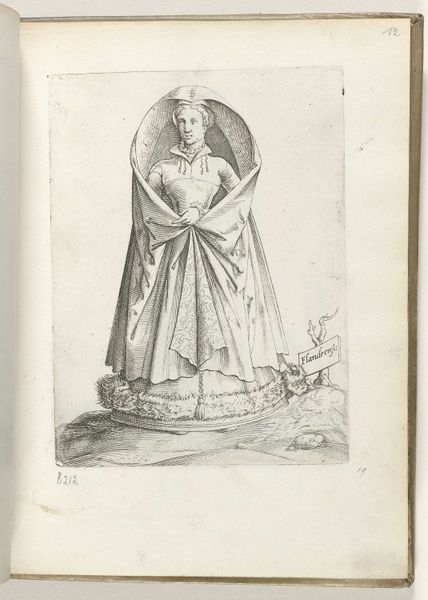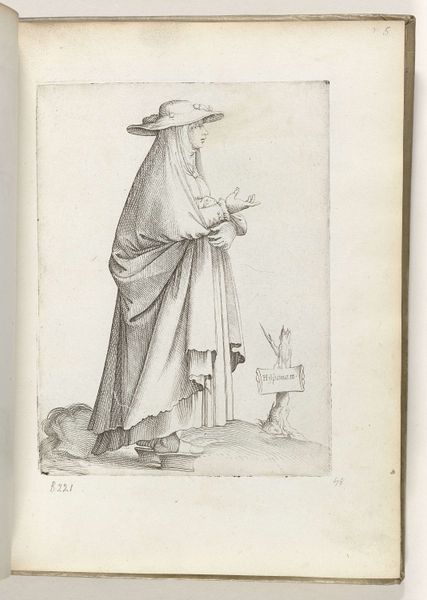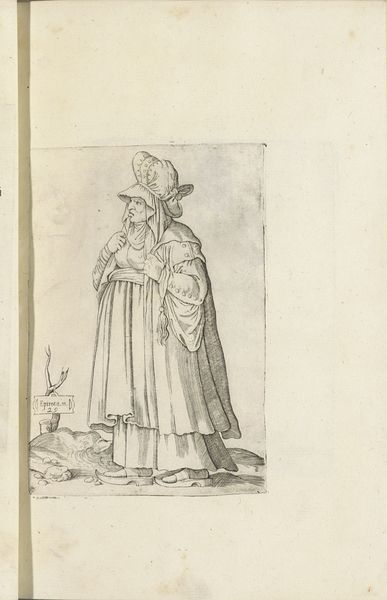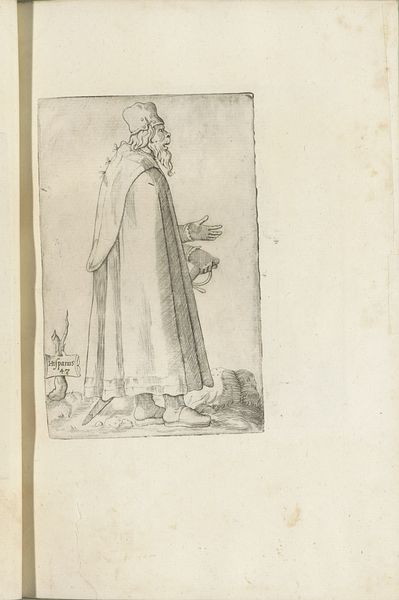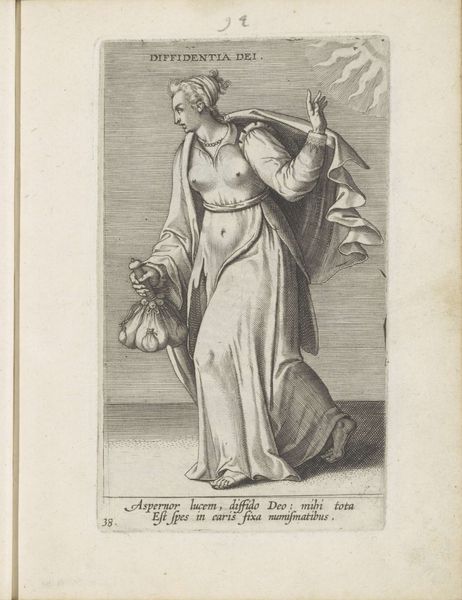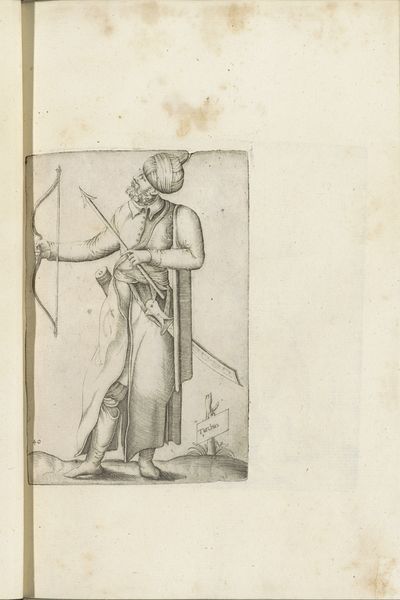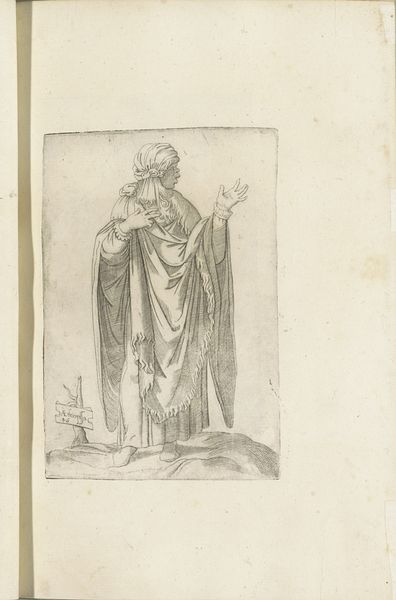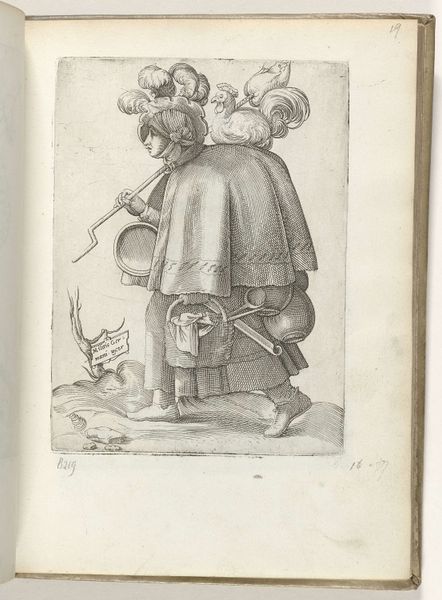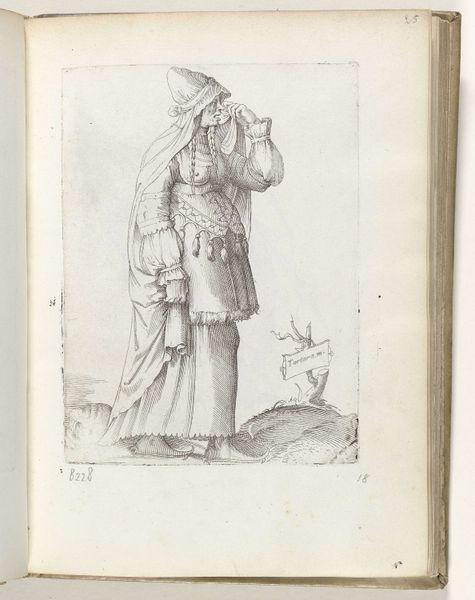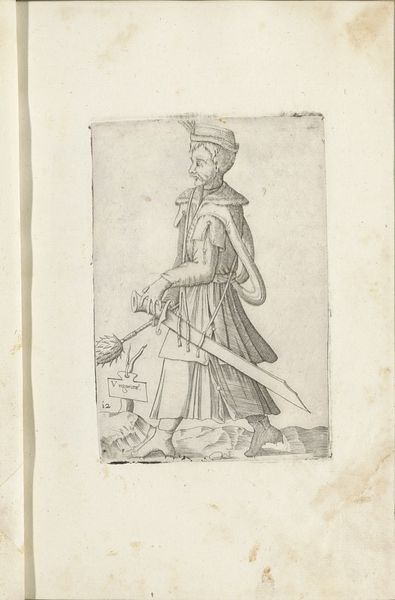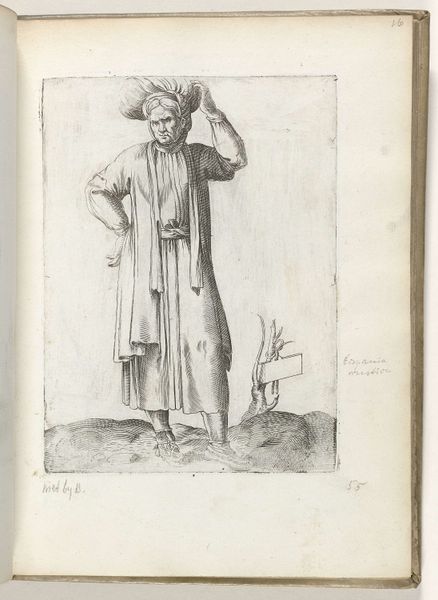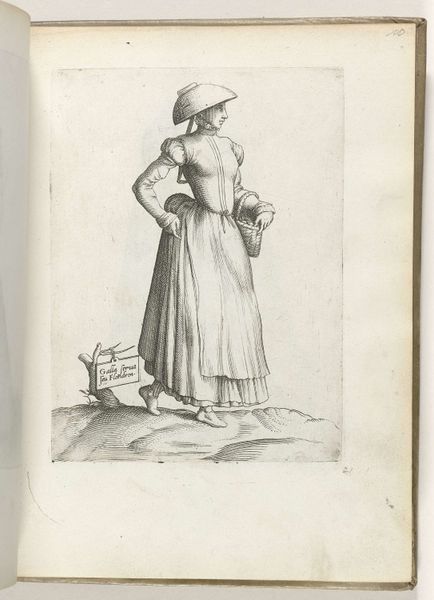
drawing, paper, engraving
#
portrait
#
drawing
#
aged paper
#
toned paper
#
light pencil work
#
pencil sketch
#
sketch book
#
mannerism
#
paper
#
personal sketchbook
#
sketchwork
#
pen-ink sketch
#
sketchbook drawing
#
italian-renaissance
#
sketchbook art
#
engraving
Dimensions: height 150 mm, width 92 mm
Copyright: Rijks Museum: Open Domain
Editor: This is “Hispanus,” an engraving from 1558 by Enea Vico, currently residing in the Rijksmuseum. There's a beautiful quality to the aged paper. The figure, possibly a Spanish nobleman, seems caught between worlds in the sketch. How do you interpret this work, especially considering the period it was created in? Curator: I see this as a potent visual statement reflecting the complex socio-political landscape of 16th-century Europe. Vico, working within the Italian Renaissance but also on the cusp of Mannerism, captures the figure in a way that transcends a simple portrait. "Hispanus," as a title, immediately marks this man as 'other,' a representative of the Spanish Empire, which, at the time, was both a dominant power and a source of considerable anxiety and resentment across Europe. Notice his stance, almost confrontational, yet also hesitant. The era of nascent colonialism shaped identity, race, and power. What questions arise for you when you consider the colonial gaze inherent in such a depiction? Editor: That's a compelling reading. The posture does seem to convey a sense of unease. What about the specific details like the sketchiness of the lines and the relatively plain background? Do they add to this interpretation? Curator: Absolutely. The sketch-like quality suggests a study, an attempt to understand or categorize this figure. The bare background pushes him forward, placing the full weight of representation onto his individual form, a body burdened by the expectations and prejudices of the time. He becomes a symbol, a stand-in for an entire culture viewed through a lens of both fascination and fear. This artwork can remind us to think about the power dynamics embedded in representation, both then and now. Editor: That really shifts how I see the piece, thinking about the subject as more than just an individual. Thank you. Curator: Indeed. By viewing artworks through this lens, we recognize their power to reveal the multifaceted intersections of identity, history, and power.
Comments
No comments
Be the first to comment and join the conversation on the ultimate creative platform.
